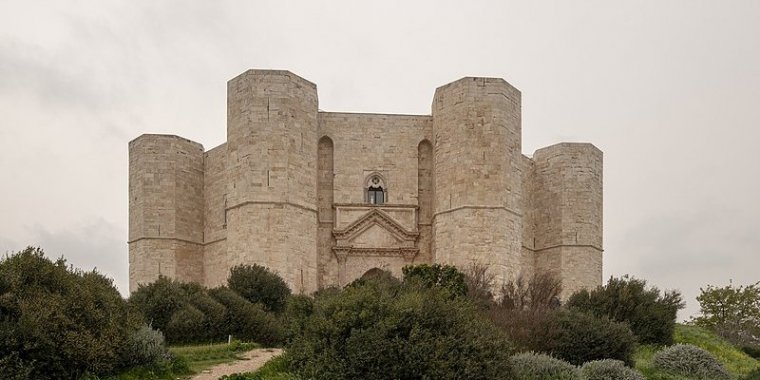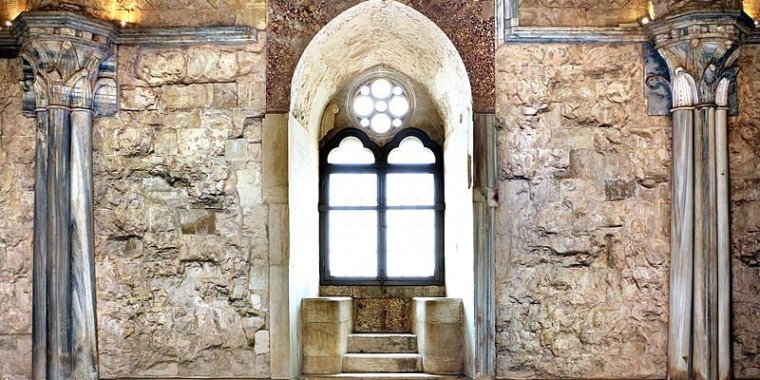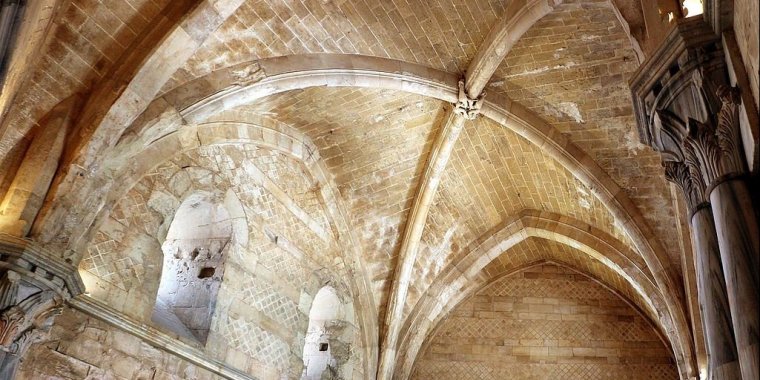| Published in Attractions / Places of Interest |
Castel del Monte, Andria, Italy
Castel del Monte (Italian for "Castle of the Mountain"; Barese: Castídde d'u Monte) is a 13th-century citadel and castle situated on a hill in Andria in the Apulia region of southeast Italy. It was built during the 1240s by the Emperor Frederick II, who had inherited the lands from his mother Constance of Sicily.
In the 18th century, the castle's interior marbles and remaining furnishings were removed. It has neither a moat nor a drawbridge and some considered it never to have been intended as a defensive fortress; however, archaeological work has suggested that it originally had a curtain wall. Described by the Enciclopedia Italiana as "the most fascinating castle built by Frederick II", the site is protected as a World Heritage Site. It also appears on the Italian version of the one cent Euro coin.
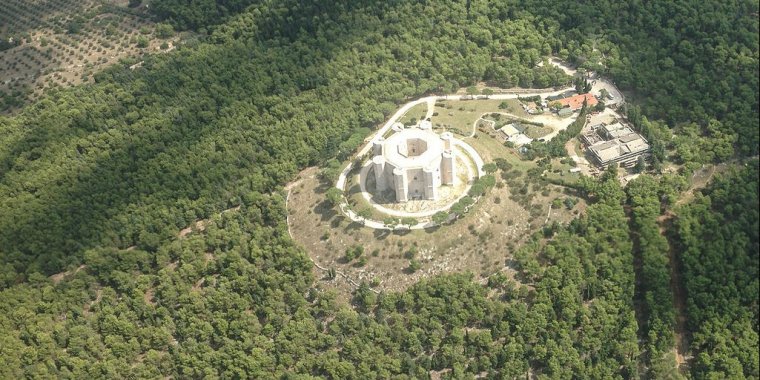
Castel del Monte seen from above. ![]()
Castel del Monte is situated on a small hill close to the monastery of Santa Maria del Monte, at an altitude of 540 m. When the castle was built, the region was famously fertile with a plentiful supply of water and lush vegetation. It lies in the comune of Andria, province of Barletta-Andria-Trani, occupying the site of an earlier fortress of which no structural remains exist.
The castle's construction is mentioned in only one contemporary source, a document dating to 1240, in which the Holy Roman Emperor Frederick II ordered the governor of Capitanata to finish some works in it. It was never finished and there is no proof that the emperor used it as a hunting lodge as commonly stated. It was later turned into a prison, used as a refuge during a plague, and finally fell into disrepair. It originally had marble walls and columns, but all were stripped by vandals or re-used in constructions nearby.
Because of its relatively small size, it was once considered to be no more than a "hunting lodge", but scholars now believe it originally had a curtain wall and did serve as a citadel. Frederick was responsible for the construction of many castles in Apulia, but Castel del Monte's geometric design was unique.
The fortress is an octagonal prism with an octagonal tower at each corner. The towers were originally some 5 m higher than now, and they should perhaps include a third floor. Both floors have eight rooms and an eight-sided courtyard occupies the castle's centre. Each of the main rooms has vaulted ceilings. Three of the corner towers contain staircases.
The castle has two entrances, an unobtrusive service entrance and an ornate main entrance. Frederick's main entrance featured elements from classical design, and may have been influenced by Frederick's interest in Greco-Roman architecture.
The octagonal plan is unusual in castle design. Historians have debated the purpose of the building and it has been suggested that it was intended as a hunting lodge. Another theory is that the octagon is an intermediate symbol between a square (representing the earth) and a circle (representing the sky). Frederick II may have been inspired to build to this shape by either the Dome of the Rock in Jerusalem, which he had seen during the Sixth Crusade, or by the Palatine Chapel of Aachen Cathedral.
Occasionally used as a hunting lodge under Manfred of Sicily, the castle become a state prison under the latter's victor, Charles I of Anjou: here Manfred's sons Henry, Azzo and Enzo were kept as prisoner after 1266, as well as other Hohenstaufen supporters.
The main wall is 25 m high and the eight bastions each 26 m. The sides of the main octagon are 16.5 m long and those of the octagonal towers each 3.1 m. The castle has a diameter of 56 m. Its main entrance faces east.
Info
Address: Strada Statale 170, 76123, Andria, Italy
Opening times:
1st October - 31st March 9.00 - 18,30 (the ticket office closes at 18:00)
1st April - 30th September 10.15 - 19.45 (the ticket office closes at 19.15)
Admission:
Full price ticket: 10,00 euro
Reduced price ticket: 3,50 euro (18 – 25 years old EU citizien visiting museums)
Free ticket: Children under 18 years of any nationality (European and no-European people)
Sources
• www.wikipedia.org
• www.casteldelmonte.beniculturali.it
YOU MAY ALSO LIKE




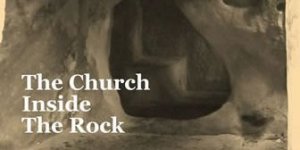

 If you own or manage a travel-related business such as a hotel, a bed-and-breakfast, a restaurant, a pub or a cafeteria, you can create a web page for your business for free on Titi Tudorancea Travel Info. » |
